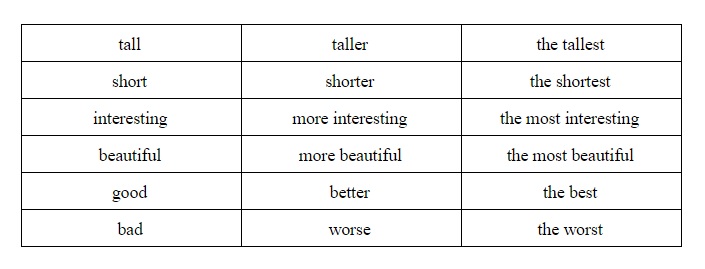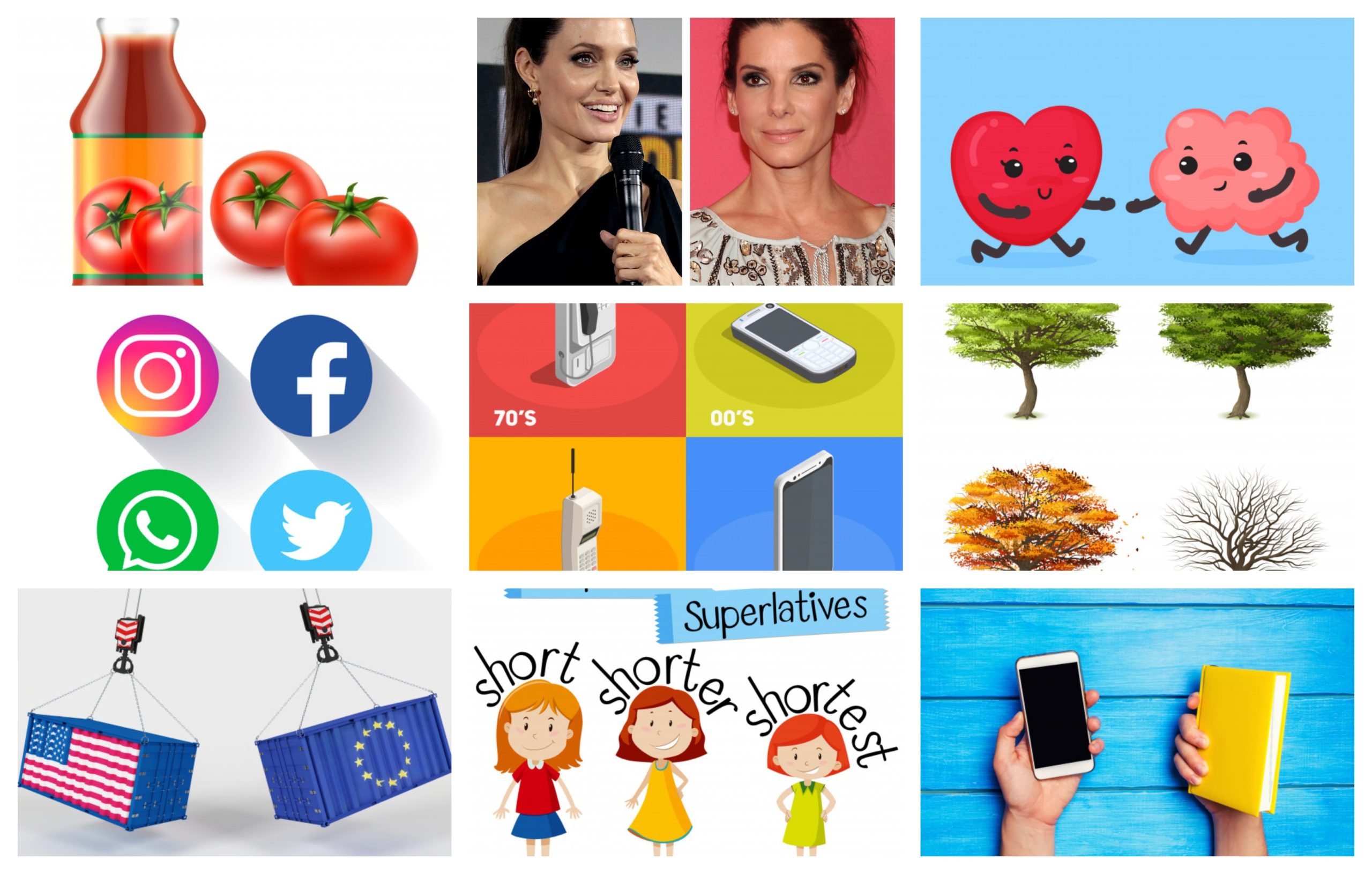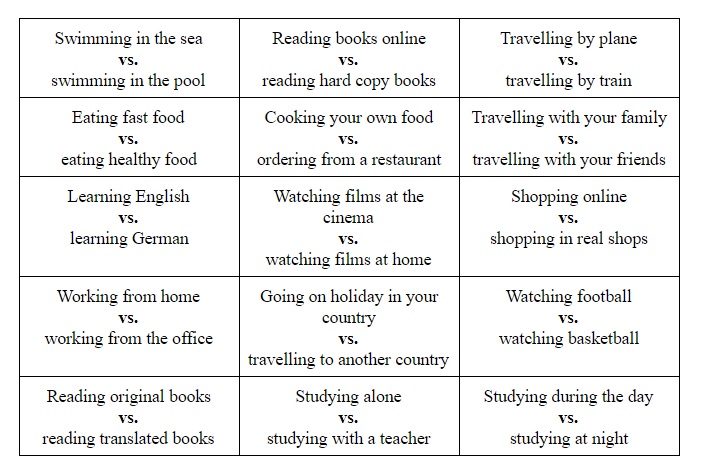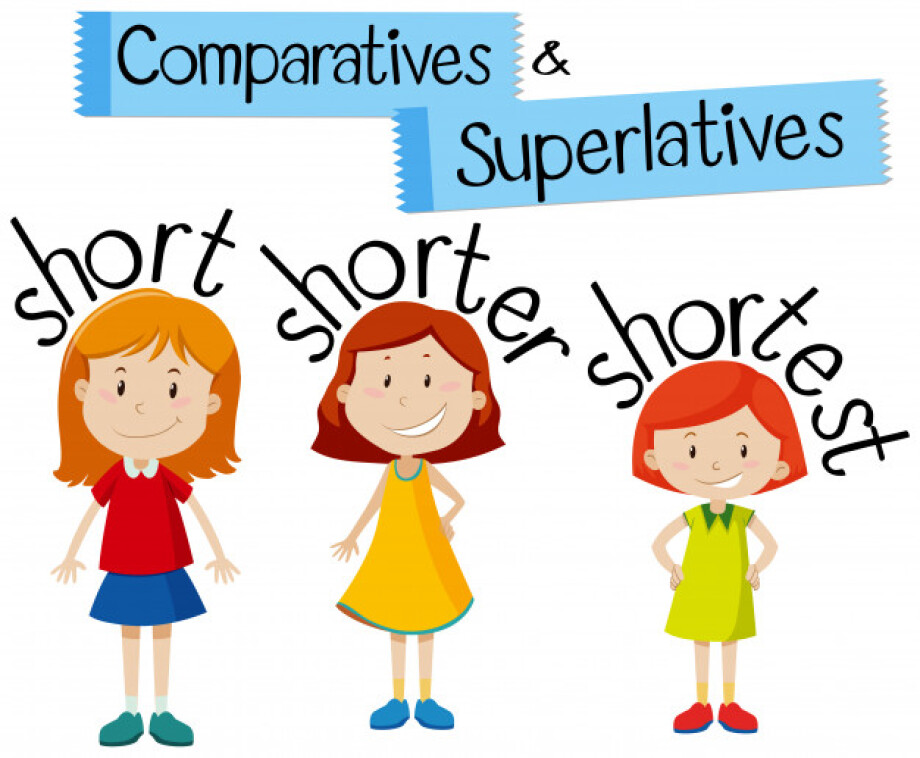Being a grammatical aspect to teach and having to introduce some rules and regulations, comparative and superlative forms can be quite boring to teach as students will need to memorize structures and exceptions. Here I will introduce the way I have been dealing with this issue for over 5 years and each time it works perfectly.
This lesson is for the learners of A2/B1 language competency. Here is what you need:
- Pictures for the students to compare.
- A worksheet for fluency practice.
Lesson stages
Warmer
Show 2 pictures of famous people and ask the students to compare them using the following adjectives (tall, beautiful, good, bad, happy). For instance:
- Angelina Jolie is taller than Sandra Bullock.
- I think Sandra Bullock is more beautiful than Angelina Jolie.
- To me, Angelina Jolie is a better actress than Sandra Bullock.
- Angelia Jolie speaks German worse than Sandra Bullock.
- Sandra Bullock looks happier than Angelia Jolie.

Note: The students can come up with many different comparisons. We just need to make sure they are using the target words. Even if the structure is misused, ignore it at this stage as we just want to test what the students know.
Language Work
Board the below-described adjectives and ask one of the students who is taller than you (always works for me 🙂 to come and stand next to you. Then ask,
- “Who is taller, Jane or me?” (JANE). Next to “tall” write “taller”.
- “Who is the tallest in the classroom?” (the students will need to choose a person). Continue by writing the superlative form “the tallest”. Now, you will need to reinforce the structure and make sure the students understand the formation. To do that, choose other short adjectives (short, large, small) and elicit the formation based on the first example.
Do the same with longer adjectives (>beautiful, expensive, interesting, etc.). E.g.
- What is more interesting; reading books online or reading hard copy books?
- What is the most interesting book you’ve read recently?
When you think the students feel comfortable with the formation, elicit the rules. Ask,
- “When do we add -er, -est to the adjectives?” (when the adjective is short, one syllable)
- “When do we add — more, — the most to the adjectives?” (when the adjective is long, more than one syllable)
Now, you can pass to the exception following the same elicitation technique:
- What is better; the winter or the summer? (Ss individual opinion)
- What’s the best season for you? (Ss individual opinion)
- What is worse; cold or heat? (Ss individual opinion)
- What’s the worst weather for you? (Ss individual opinion)
Note: Make sure to tell the students that adjective ending in -y can be used in both forms (happy-happier-the happiest OR happy-more happy-the most happy).

By the end of this stage you will have the below chart on your board.
A good idea here is to teach the students the structure “Angelina Jolie is as talented as Sandra Bullock” as well.
Board the above sentence and ask:
- “Is Angelia Jolie more talented?” (NO)
- “Is Sandra Bullock more talented?” (NO)
- “Are they equally talented?” (YES)
To practice, you can provide more examples for the students to practice open class.
Controlled Practice
Post the below pictures on the walls, set the students in pairs to walk around the classroom and try to compare the things/concepts in the pictures. E.g.
- Jazz is a better type of music than rap.
- Rap is the best type of music.
- Jazz is as relaxing as rap.
In the meantime, monitor and help the students to use the correct structures and stop them to correct when necessary.

You can get creative here and choose as many different things to compare to each other as you can.
When the students are done, choose a couple of pictures and ask for open class comparison.
Fluency Practice
Set the students in groups of 3 and distribute the cards below, 1 set to each group. The students will need to take a card, read on what is written and ask a question to one of the team members. E.g.
A: Is swimming in the sea easier than swimming in the pool?
B: Yes, swimming in the sea is easier than in the pool?
A: Why?
B: Because the sea is salty and keeps you on the surface.
Ask the students to use full sentences to respond to each others’ questions and ask for extra information to have more speaking practice.

In the meantime, walk around and jot down some language misuse connected with the target structures to come back to it in a later error correction slot.






 Маргарита Аветисян
Маргарита Аветисян 
 Вероника Аветисян
Вероника Аветисян 


